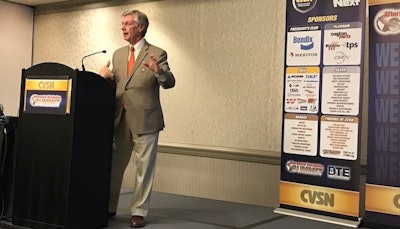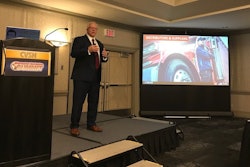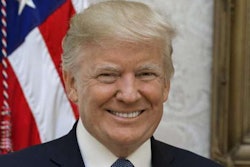
Baumohl brought equal parts optimism and pessimism to the event, noting while the U.S. economy in particular is not displaying the huge warning signs that have preceded most economic downturns since World War II, the sheer length of the market’s current expansion (the longest in recorded history) and a number of volatile external factors could increase the likelihood the market will eventually trend down in 2020 and 2021.
“It’s time to buckle up, the next 12 to 18 months are going to be a bumpy ride,” he said.
In using historical data to inform future economic projections, Baumohl said his company sees three likely scenarios forward for the U.S. economy between now and 2021. The most likely of those projections (he gave it a 55 percent chance) was the most moderate — a scenario in which the U.S. and Chinese trade war slowly cools, some tariffs are rolled back and others become focal points of compromising discussions. In that instance, Baumohl said The Economic Outlook Group was projecting the U.S. economy to grow by 2.3 percent in 2020 and 2.6 percent in 2021.
In a circumstance in which the tariff war doesn’t slowly cool, Baumohl said the The Economic Outlook Group believes it is doubly likely the discussion intensifies (30 percent to 15 percent overall chance) and weakens the market to below 2.0 percent next year.
Baumohl said the most frustrating aspect of economic forecasting around the trade discussion is its volatility. He said the United States has legitimate grievances with China that the country is right to address, but the manner in which they are being challenged at this point is so unorthodox that it is impossible to evaluate the path the talks will take in the coming months.
Baumohl acknowledged the stress that puts on businesses in both nations and said he remains optimistic that at some point in the near future both sides will “realize this is going nowhere” and take action toward serious compromises.
In the meantime, he said any manufacturing business with operations or supplier connections in China should be evaluating their supply chain to determine their next best step forward. He said some companies are finding success shifting their imports to other nations (Vietnam and Taiwan have been big winners there) while others are finding, with the helping of automation and robotics, that domestic manufacturing has become more cost-effective than previously believed. On that topic Baumohl was careful to not advise any one choice, only to note that businesses should exam every available option if eager to escape the tumultuous environment of current U.S./Chinese commerce.
Baumohl also added that the trade dispute with China is not the only factor that could weaken the U.S. economy. He said he believes an exogenous shock to the market — such as a cyber attack — could be more substantially more damaging than the trade war continuing without resolution. He used a 2018 Russian attack on the U.S. power grid as an example, stating another, larger attack could be comprehensively devastating.
His advice for business leaders to that potential risk was the investment in cyber security and renewable energy resources today to best position a company to become more resistant against such attacks tomorrow.










